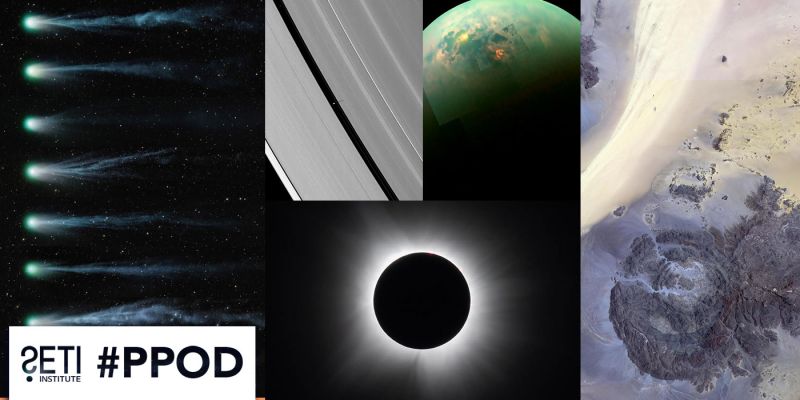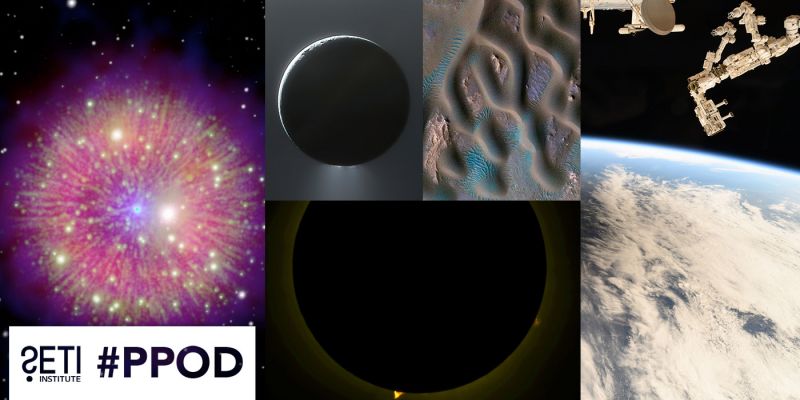The Drake Equation is a mixture of parameters whose values, or even relevance, may change.
Peruse the chapters of any introductory textbook on astronomy and you’ll find the second-most celebrated equation in science: The Drake Equation. Eclipsed in fame only by Einstein’s E = mc2, this formula was concocted by astronomer Frank Drake in 1961 as an agenda for the first formal meeting on the prospects of future SETI experiments.
The straightforward intent of the equation is to provide an estimate of the number of communicating societies in the Galaxy, N. Clearly, if this number is close to zero, there’s little point in devoting telescope time to search for signals from extraterrestrials. If it’s large, then there’s reason to hope for a discovery that would prove we’re not alone.
However, while many of the equations of science are immutable, the Drake Equation is a mixture of parameters whose values, or even relevance, may change. Some are potentially measurable, such as the number of bio-friendly planets in the Milky Way, and others aren’t – such as fc, the fraction of intelligent species that develop signaling capability – at least until we have actually found a number of technologically adept civilizations.
Given this problematic nature, it’s not surprising that many people have offered what they consider “improvements” to Drake’s formulation. Drake himself says he regularly receives correspondence from those who think his equation should be tweaked.
Have any of these ideas proven to be worthy? Should the textbooks be altered?
Consider some of the more common suggestions. Some folks claim that the equation is too conservative. It proceeds from the premise that communicating extraterrestrials evolved on a planet that’s not only suitable for biology, but one that can spawn intelligent biology. In other words, their planet bears some resemblance to our own, and the broad strokes of their evolutionary history are not too different from ours.
Recent developments in both astronomy and technology could modify this scenario. For example, one of the terms in the Drake Equation refers to the average number of Earth-like planets in a solar system. But we now consider that biology may take hold in the lakes and oceans of moons, something that may even have happened nearby, on the satellites of Jupiter and Saturn. The cradle of an alien society might be a moon, not a planet.
But while interesting, this is no more than a fine point. It requires only a semantic change to one of the terms in the equation – namely, replacing “Earth-like planets” with “habitable worlds.”
A possibly more substantive shortcoming of Drake’s formula might be that – whatever the cradle in which they arise – the extraterrestrials might not stay in it. If advanced societies can colonize other stellar environments, then intelligence could be widespread, even if the evolution of intelligence is rare. This might be implausible for biological beings, but maybe not for their putative machine successors. Thinking machines do not suffer the frailties and finite lifetimes of biological intelligence, and may be able to spread far from their natal solar systems.
A similar possibility can be found at the other end of the evolutionary spectrum, namely that microscopic organisms could diffuse naturally through space – an idea known as panspermia. In this picture, primitive life might be carried from one planet to another as passengers on detritus ejected in collisions between life-bearing worlds and other bodies in their planetary system.
These scenarios might seem to modify the fundamental premise of Drake’s equation. If life or intelligence can spread out, the tally of bio-friendly worlds is not especially important, because even worlds that are not suitable for spawning life could still have it. However, Drake himself points out that these scenarios can be subsumed into the value of fl. Indeed, if colonization, panspermia or intelligent spacefaring are commonplace, fl and fc could be very large.
And in any case, Drake argues that deliberate colonization might be uncommon.
“The spreading of intelligent life from one star system to another would probably not appeal to truly intelligent creatures,” he says, “once they calculate that, even travelling at, say, only one-tenth the speed of light, it takes more than a million times more energy to establish a colony around another star than required to establish one of the same size near their own. There is plenty of material available in the satellites and asteroids of stellar environments, assuming they resemble ours, to create a multitude of habitable, planet-like abodes right at home.”
As for panspermia, he notes that “it would be far more efficient to send by radio the data to replicate the creature's DNA, to clone duplicates of themselves.” And such signaling, of course, might be detectable.
A different category of proposed modifications concerns the equation’s mathematical architecture. Each term is represented by a single number; for example, fi, the average fraction of worlds with life that eventually produce intelligent life. But for many terms, a range of values will apply. Consequently, several researchers, beginning with the Italian mathematician Claudio Maccone, have suggested replacing these single numbers with probability distributions.
That might seem like no more than a technical refinement, and one that could be viewed as overkill for an equation that was, after all, only intended to guide discussion at a meeting. But one consequence of replacing average values with distributions is that this could easily broaden the range of estimates for N enormously. Indeed, some authors have argued that because doing this could produce anything from zero communicating civilizations to a myriad, we can’t learn much from the equation.
The small group of scientists who were first exposed to the Drake Equation in 1961 didn’t write down any estimates for the values of its parameters. And while we now know some of these quantities better than we did sixty years ago (such as the fraction of stars with planets), there are several terms for which we still have zero information: in particular, fc and L.
Still, it’s encouraging that none of the factors that have been constrained by new research have diminished our hypothesis that intelligence might be commonplace. That could have turned out differently.
From a broader perspective, we can regard the many attempts to reform the Drake Equation as tributes to its importance. After all, it was intended to encapsulate the quantities that were believed to be relevant in gauging the worth of experiments to discover other beings, or at least other intelligence.
We should appreciate the Drake Equation for its usefulness, not for its possible shortcomings. After all, a map is not a destination. But it can help you get there. Don’t change the textbooks.







